Tom's Guide Verdict
The dinky HyperX SoloCast is a more capable mic than it looks, with rich sound and an adjustable stand. For $59, it’s a great deal.
Pros
- +
Very affordable
- +
Good sound
- +
Adjustable stand
- +
Very portable
Cons
- -
Limited controls
- -
Cardioid pattern only
Why you can trust Tom's Guide
Price: $59
Connection: USB-C to USB
Ports: USB-C
Condensers: 1
Directional patterns: Cardioid
Size: 6.9 x 3.1 x 3.1inches (with stand)
Weight: 9.2 ounces
USB microphones rarely come smaller than the HyperX SoloCast, and it’s even rarer that they deliver such impressive recording clarity for less than $60.
Yes, this is a relatively cheap mic, and is basic enough in some regards that power users may wish to look elsewhere. But there’s a certain appeal to plug-and-play simplicity, and as you’ll see in our HyperX SoloCast review, becoming one of the best microphones doesn’t demand fancy extras.
HyperX SoloCast review: Price and availability
At $59, the SoloCast is a full $100 cheaper than its HyperX QuadCast S stablemate. There are reasons for that, as we’ll see, but in any case this one of the cheapest USB microphones we’ve tested.
You can buy it directly from HyperX, or from such third-party sellers as Amazon, Best Buy and Walmart.
HyperX SoloCast review: Design
The SoloCast is effectively an answer to the Blue Snowball Ice: an easy-to-use USB mic that’s both cheap and compact. Emphasis on the latter: the SoloCast is about the same price as the Snowball Ice, but the tiny dimensions of both the mic and stand make Blue’s design seem titanic.
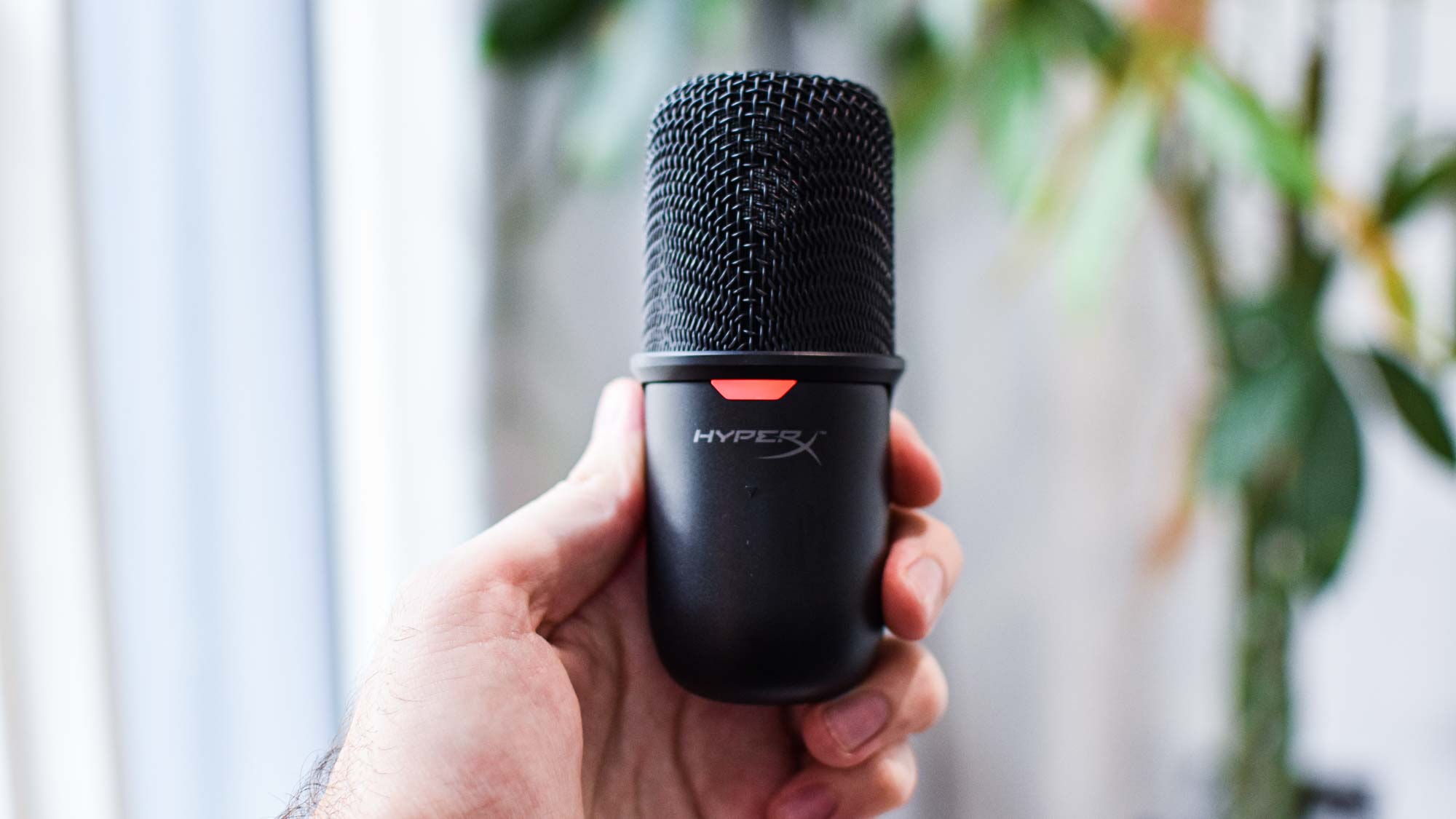
Nonetheless, the SoloCast’s stand is more adjustable than the Snowball Ice’s simple tripod. Both mics can pivot upwards, but the SoloCast can also rotate to either side.
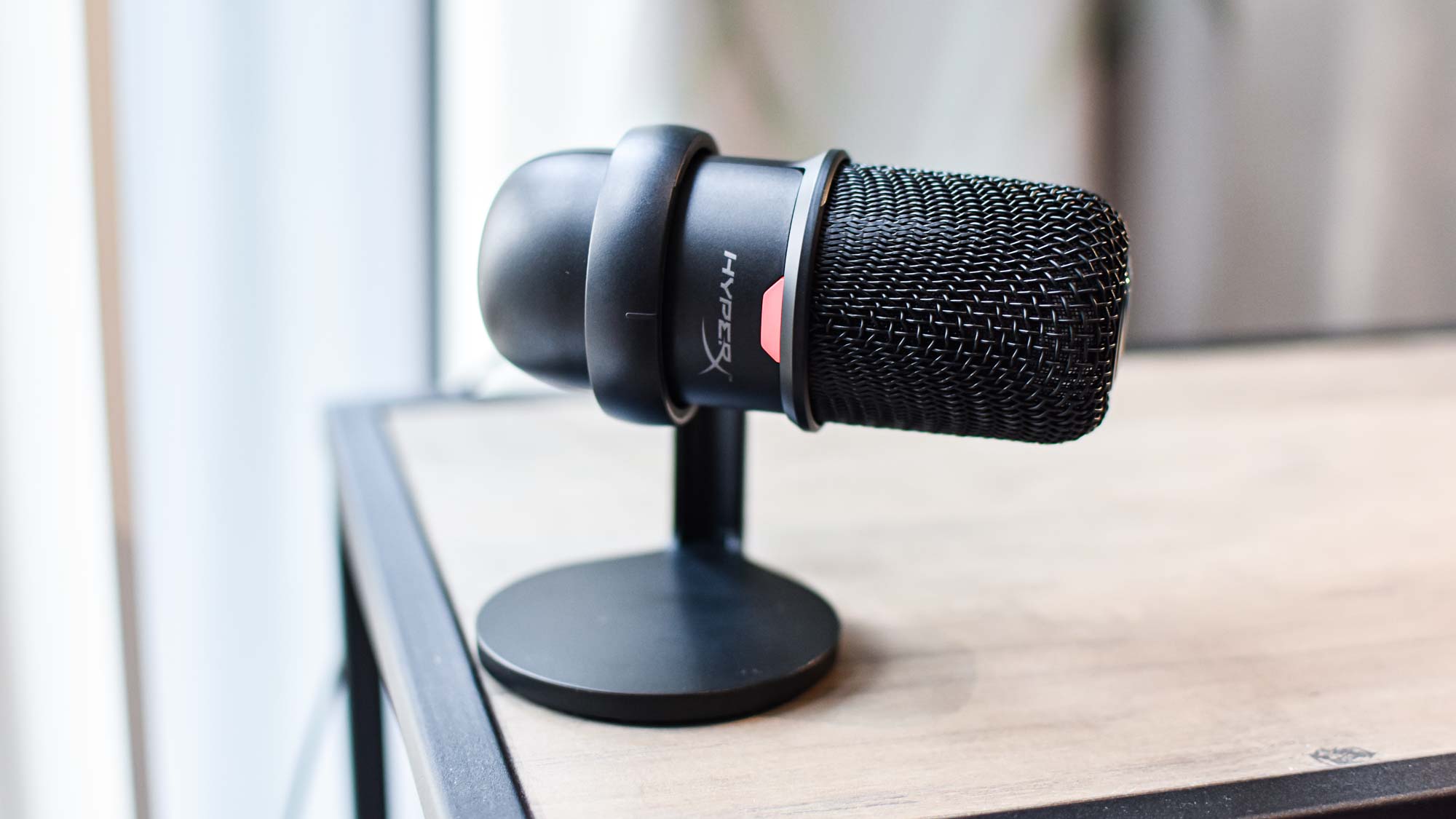
This is potentially quite useful, in case you ever want to lower its profile enough to squeeze underneath a monitor, or keep it placed in front of your keyboard without obstructing your view of the keys.
Get instant access to breaking news, the hottest reviews, great deals and helpful tips.

This microphone also beats the Snowball Ice by having an onboard mute button. In fact, it’s not so much a button as a touch sensor, which doesn’t require as much force to activate. As a result, the microphone doesn’t pick up any tapping or knocking sounds when you mute or unmute.
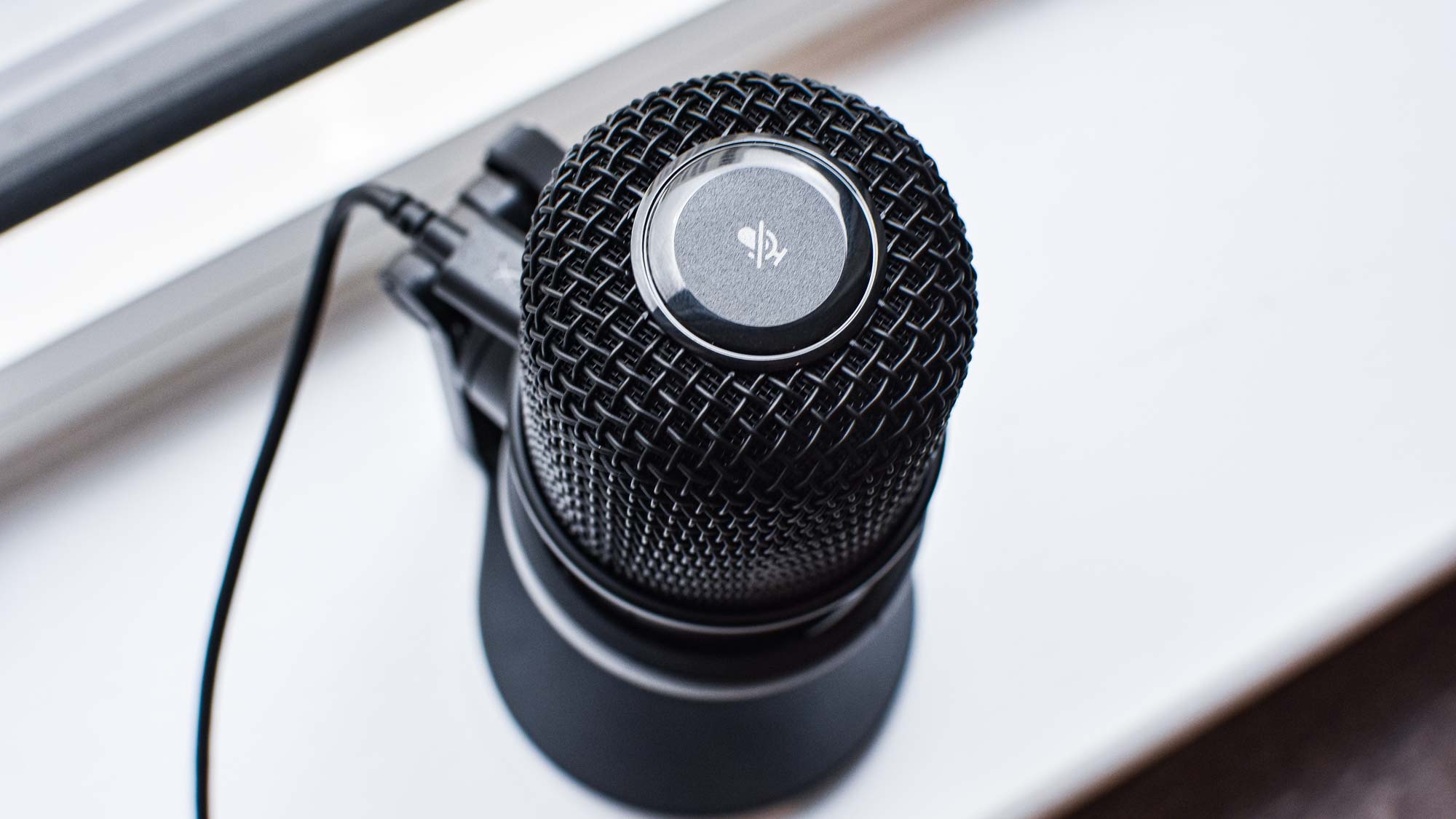
That’s also the extent of the integrated controls. There are no volume or gain dials, which is unfortunate, nor any headphones jack for mic monitoring. The SoloCast is clearly a far cry from the QuadCast S and its myriad of hardware features.
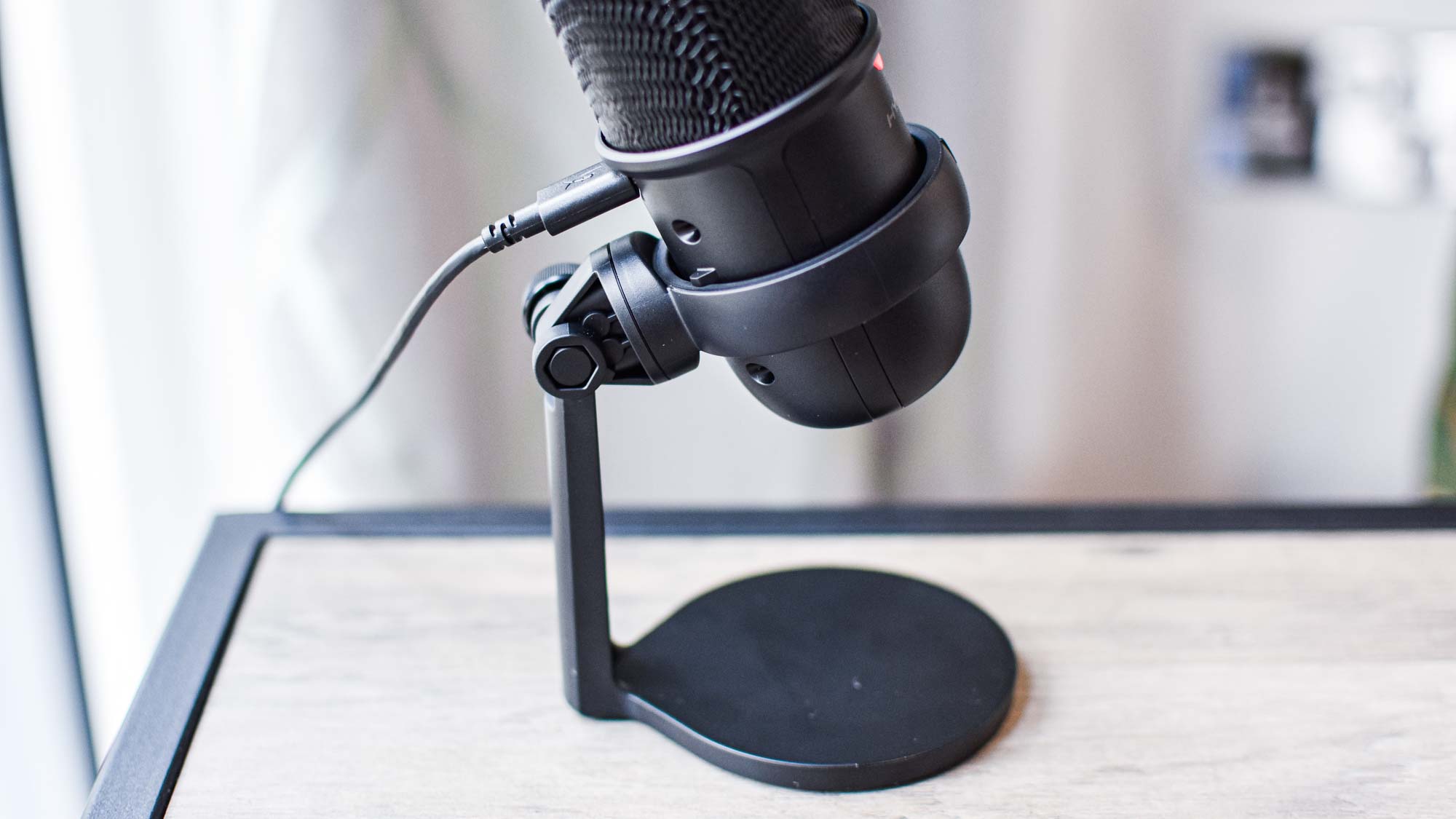
Still, it handles the basics better than the Snowball Ice, and if you want a bigger and better stand you can always add your own; the SoloCast fits stands and arms that use either 3 / 8-inch or 5 / 8-inch threads.
HyperX SoloCast review: Sound quality
Other than being a bit gain-heavy — again, a dial would be nice — the SoloCast’s recording quality is its strongest suit. For nearly half the price, its cardioid-pattern recording comfortably competes with mics like the Blue Yeti Nano or JLab Talk.
Perhaps more pertinently, it sounds noticeably better than the Snowball Ice. Playing back recordings, my voice just sounded richer and fuller on the SoloCast, with less of an audible reverb effect. Background noises are quieter, too: the fact that mouse clicks and the clacking of my mechanical keyboard weren’t as intrusive on the SoloCast means it could be much better as a PC gaming mic, or for use in casual streams.
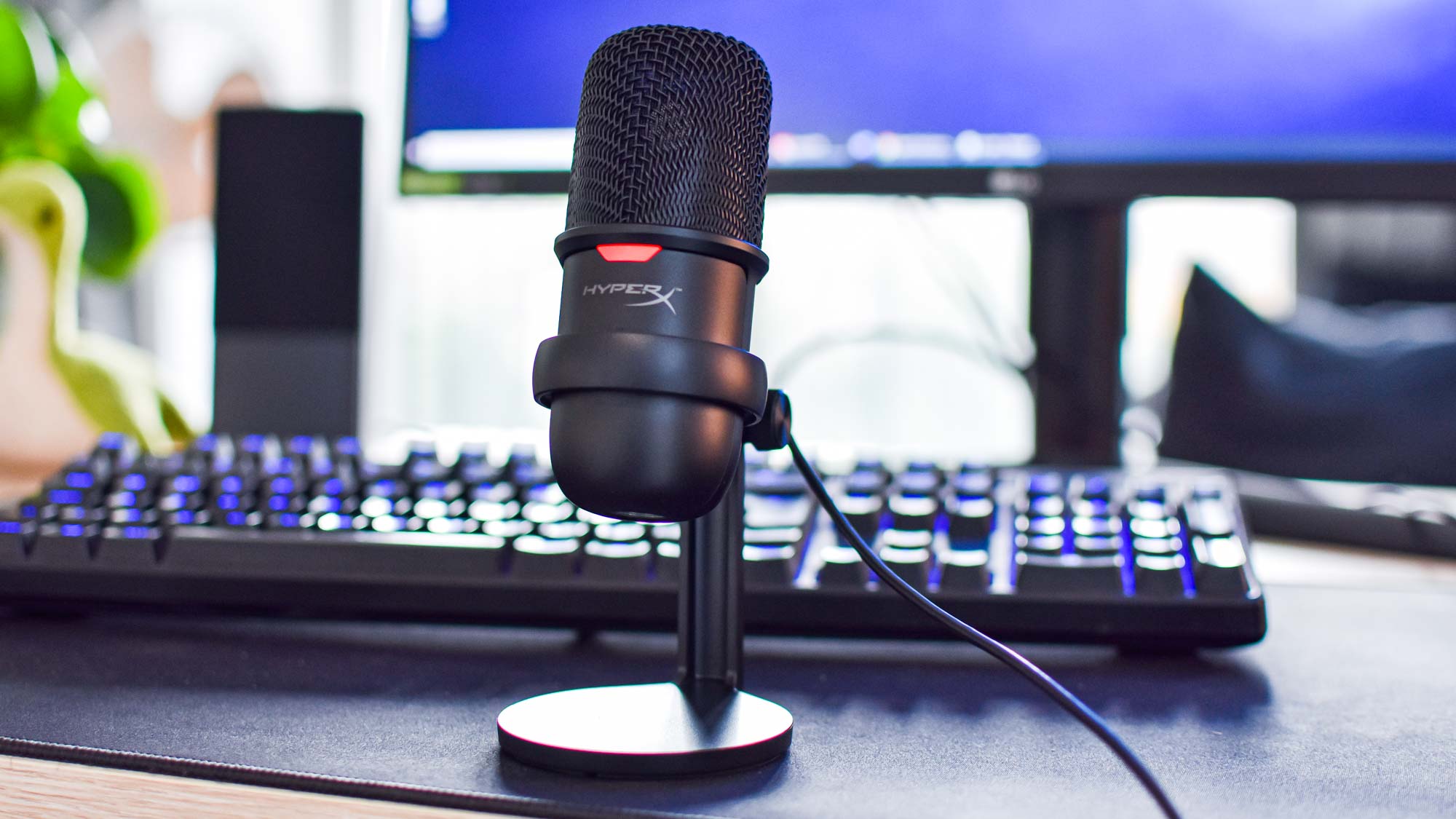
That said, it’s worth paying more for the JLab Talk if you want a more serious podcasting mic, and especially if you’ll ever need to record more than one speaker at a time. The SoloCast sounds great for the money, but its only recording pattern is cardioid, so it can’t effectively record voice unless you’re speaking directly into the front of it. The Talk’s bidirectional, omnidirectional and stereo patterns therefore give it much greater flexibility.
For gaming and most forms of streaming, however, cardioid will do just fine — as will the SoloCast.
HyperX SoloCast review: Verdict
As long as your needs are simple enough to accommodate the HyperX SoloCast’s basic controls and single recording pattern, you’ll find it a great little microphone. Straight out of the box, it sounded much better than I expected from a $59 desktop mic, and it beats the Blue Snowball Ice on overall design as well.
It’s a worthy pick for those whose budgets won’t stretch to the JLab Talk, and will deservedly take the Snowball Ice’s place on our best USB microphone rankings.

James is currently Hardware Editor at Rock Paper Shotgun, but before that was Audio Editor at Tom’s Guide, where he covered headphones, speakers, soundbars and anything else that intentionally makes noise. A PC enthusiast, he also wrote computing and gaming news for TG, usually relating to how hard it is to find graphics card stock.

